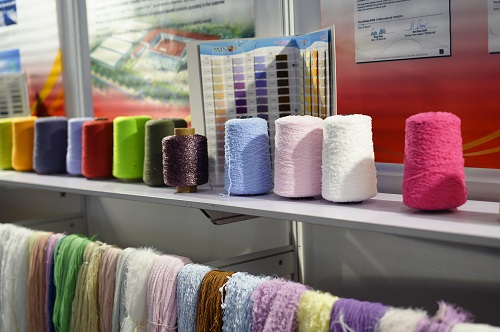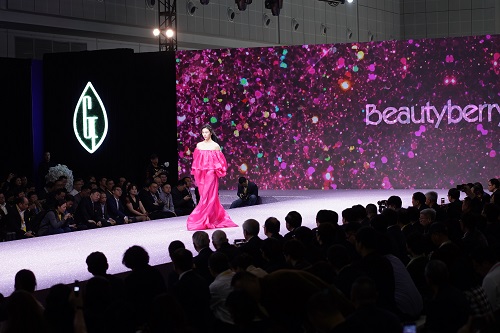FW
"The second largest clothing manufacturer and exporter in the world, Bangladesh has become a major hub for manufacturing of extraordinarily cheap garments. Though industry leaders expected Bangladesh’s status as the world’s top manufacturer of cheap garments to change post the April 2013 Rana Plaza collapse, increased scrutiny did not get reflected in apparel costs."
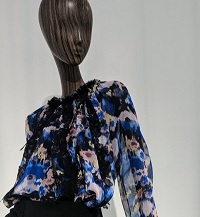 The second largest clothing manufacturer and exporter in the world, Bangladesh has become a major hub for manufacturing of extraordinarily cheap garments. Though industry leaders expected Bangladesh’s status as the world’s top manufacturer of cheap garments to change post the April 2013 Rana Plaza collapse, increased scrutiny did not get reflected in apparel costs.
The second largest clothing manufacturer and exporter in the world, Bangladesh has become a major hub for manufacturing of extraordinarily cheap garments. Though industry leaders expected Bangladesh’s status as the world’s top manufacturer of cheap garments to change post the April 2013 Rana Plaza collapse, increased scrutiny did not get reflected in apparel costs.
Price fall despite rise in initiatives
As Bangladesh-based newspaper Daily Star reveals, prices of apparels made in Bangladesh continue to fall despite increased oversight and the rise in initiatives, such as the Alliance for Bangladesh Worker Safety and the Accord on Fire and Building Safety.
Even an increase in cotton prices, used to make almost 90 per cent garments in the country, have not been able to uplift the price of these apparels. For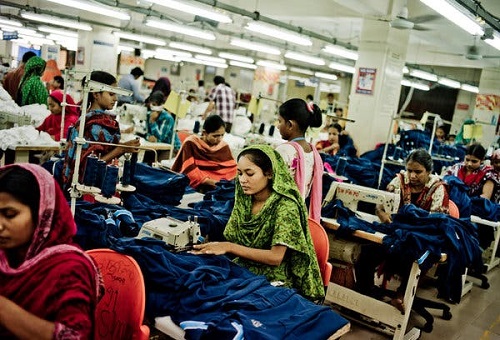 instance, in 2013, the country sold a dozen pair of cotton trousers for $62.26. However, in 2017 prices of the same quantity of pants dropped 12.8 per cent to $54.29 per dozen. At the same time, prices of T-shirts exported to the European Union declined by about 5 per cent.
instance, in 2013, the country sold a dozen pair of cotton trousers for $62.26. However, in 2017 prices of the same quantity of pants dropped 12.8 per cent to $54.29 per dozen. At the same time, prices of T-shirts exported to the European Union declined by about 5 per cent.
Concentration hampers price growth
Reflecting on the falling prices of garments over the past five years Tripti Lahiri, Quartz says, apparel sales are increasingly concentrated in the hands of a few large multinational retailers whose massive orders give them significant legroom to not only set production timelines but also fix prices.
Rubina Huq, President of BGMEA, believes the industry has been over aggressive about price quotes in order to secure business from Western brands and retailers. This has led to buyers taking advantage of the situation by opting for international brands who offer clothes at cheaper rates. As a result, the domestic industry has few options other than reducing the price of their RMG products.
"Jacket Required, the UK’s fashion contemporary menswear and streetwear trade show, taking place at the Old Truman Brewery on the January 22nd to 23rd January 2020, has announced its partnership with Klarna UK to support its commitment to menswear retail and the fashion industry. The show has also revealed a line-up of new brands to the show offering visitors the opportunity to view their collections for the first time in the UK."
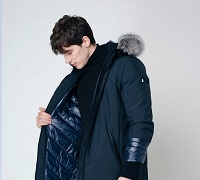 Jacket Required, the UK’s fashion contemporary menswear and streetwear trade show, taking place at the Old Truman Brewery on the January 22nd to 23rd January 2020, has announced its partnership with Klarna UK to support its commitment to menswear retail and the fashion industry. The show has also revealed a line-up of new brands to the show offering visitors the opportunity to view their collections for the first time in the UK.
Jacket Required, the UK’s fashion contemporary menswear and streetwear trade show, taking place at the Old Truman Brewery on the January 22nd to 23rd January 2020, has announced its partnership with Klarna UK to support its commitment to menswear retail and the fashion industry. The show has also revealed a line-up of new brands to the show offering visitors the opportunity to view their collections for the first time in the UK.
On-site, the show sponsor will create a branded installation at the entrance of the show, as well as providing the Klarna Lounge, a break-out space for visitors to meet and network.
Luke Griffiths, Vice President and General Manager at Klarna UK states in a statement; “Since our launch in the UK in 2014, we have been working with some of the biggest names on the UK High Street. Our support of Jacket Required this year is a demonstration of our commitment to menswear retail and the Fashion Industry. We are very excited to be supporting the event and sharing our experience of removing friction from the buying experience for millions of shoppers.”
New brands to participate in the show includes Aigle, Bjanko Milano, Ucon Acrobatics, Dashel, Daisy King Club, Komodo, Revolution, Conscious Step, United Change Makers,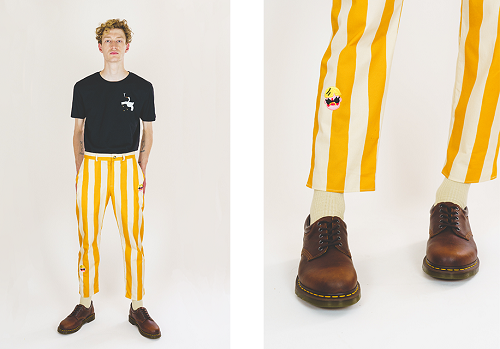 Surf Perimeters , Oscarlino, Alexridolfi, Snowman New York, Saint James, Valentino De Santis, Serts London, Munich Footwear, Invicta, Parkland Bags, Mossimo Clothing, Randolph, Twenty Montreal, Sorren, Bjorn Borg, HEDON, and ON.
Surf Perimeters , Oscarlino, Alexridolfi, Snowman New York, Saint James, Valentino De Santis, Serts London, Munich Footwear, Invicta, Parkland Bags, Mossimo Clothing, Randolph, Twenty Montreal, Sorren, Bjorn Borg, HEDON, and ON.
Selected brands include Didriksons, Fjallraven, MAKIAPOP 84, Kangol, Bailey of Hollywood, Cheaney Shoes, Loake Shoemakers, Blundstone, Yogi , OSPREY, Superga and Sebago. Adam Gough, Event Director at Jacket Required says; “Visitors are going to see some dr have re-evalu ated what visitors want and created a show we hope will be well received by the industry. With an emphasis on sustainability, new and premium brands ry focused. We are delighted to introduce Klarna as our headline sponsor to raise awareness of their services in retail. They have made a big impact since their launch and both retailers and shopper’s benefit from their simple payment solutions.”
Taking place in East London’s Old Truman Brewery on the January 22nd to 23rd, Jacket Required is a premium show offering buyers an inspiring, carefully edited international line-up of contemporary menswear, streetwear, breakthrough talent, footwear, accessories and lifestyle products.
Jacket Required is the UK’s only trade event presenting a curated showcase of the most progressive and contemporary men’s collections. Innovative, creative and with more than a nod to London’s inimitable sartorial swagger, Jacket Required strives to inspire buyers to explore the business potential of their stores and provides a platform for both established and new talent making waves in the fashion industry Jacket Required is a Hyve Group plc event.
Exhibitors and newcomers, including the suppliers from Belarus, are set to show off their latest innovations to meet the specific sourcing needs of buyers with a diverse range of unique functional yarns at Yarn Expo Spring. The fair will be held from 11th to 13th March 2020 at the National Exhibition and Convention Center in Shanghai.
As one of the most essential events in the yarn and fibre industry, Yarn Expo Spring attracted 468 exhibitors from 12 countries and regions last year, a 7.5% increase compared to 2018. Among the comprehensive range of products on offer at Yarn Expo Spring, functional yarns represent a direct and constant market demand in spite of changing fashion trends.
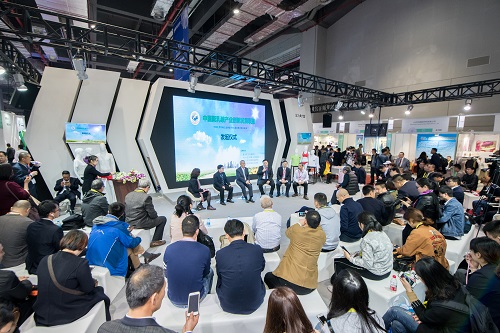
Following the advancement of technology, functional yarns have been developed and used in textile production to enhance the functionality and performance of sportswear, outdoor wear and even everyday clothing. From thermo regulating, moisture absorbing and flame resistant properties to antibacterial, antistatic and more, these innovative features offered by functional yarns add value to textile products as more and more manufacturers focus on customisation according to consumers’ needs. By integrating functionality directly into the yarns, textile products become highly durable, which increases their sustainability as well.
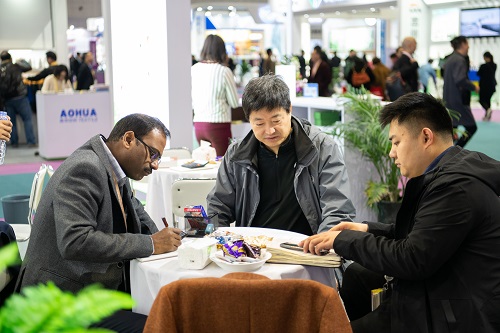
Functional products help exhibitors stand out in the market and reach new clients from around the world at Yarn Expo, which saw over 28,000 buyers from 87 countries and regions last spring. This year, the focus will be on new exhibitors from Belarus who are attracted to join Yarn Expo Spring for the first time to showcase their quality acrylic fibers, nylon yarns, polyester fibres, industrial yarns and more.
“We have observed buyers with a higher demand for quality products, especially products with certifications. This makes our product more competitive and more ready to sell to buyers,” noted Mr Guo Biao, General Manager of Hai Thien Synthetic Fiber Ltd Co from Vietnam.
Everest Textile’s unique yarn processing technology creates moisture absorbing and quick drying stretch fibre that is supplied to renowned brands such as Adidas, Nike, Puma, Patagonia, Spyder, The North Face and more.
“We would like to take this opportunity to better explore the China market and we have continuously seen clients from China, Southeast Asia and the US coming to our booth to enquire. The fair has impressed me a lot with its scale and organisation. The results have exceeded our expectations and we will be back next year. Yarn Expo creates a collaborative global networking place to share ideas, experience, expertise and resources,” commented Mr Shen.
With increasing demand for protective clothing, Korean supplier HJLite believes reflective yarns to be the solution to enhancing the safety and functionality of garments.
China’s textile industry will deploy more resources in green technology and sustainable development to tackle climate change. The future fourth industrial revolution will be based on green technologies plus artificial intelligence. The green industrial revolution means manufacturers can solve issues such as new energy and recycled materials via technological innovations and sustainable productivity development. After a year of hard work, the participation of China’s fashion industry has been meaningful and constructive. China’s textile industry provides jobs to over 27.15 million people in both production and sales.
Tackling climate change is not only a new opportunity for the global textile industry but also a direction for shared responsibility across industries. Many countries’ demand for products made by clean energy and green materials also can help in coping with climate change, achieving emission targets and saving energy costs for their residents.
China’s textile industry is a key player on a global scale. In 2018, China’s chemical fiber production exceeded 50 million tons, making up over two thirds of global production. Textile exports from China reached 37.6 per cent of the world’s total in 2018, a 3.5 per cent increase from the previous year, while apparel exports accounted for 31.3 per cent of the world’s total. China is the world’s biggest textile exporter.
Bharatiya Vidya Bhavan’ Usha & Lakshmi Mittal Institute of Management (BULMIM), organised a round table conference on Expectations of the Industry from Union Budget-2020 on January 17, 2020 in New Delhi. The conference was inaugurated by Prof. M. Durgamohan, Director, BULMIM who gave the inaugural address. He emphasised on the need for introducing industry-academia events and how BULMIM has always been at the forefront of organising these events for the benefit of the students and public at large.
The delegates gave an overview of their respective industries in the last one year and discussed about what the future holds for them. This was followed by the round table discussion, where important areas, like Industry’ Wish List for the forthcoming Budget, Slowing Economy and its impact and planned strategies to deal with it and the expected stock market journey were discussed in detail.
The conference was attended by representatives of industry and academia. Apart from the students of two-years full time PGDM programme of BULMIM (approved by AICTE), students of other institutes like JIMS, YMCA, Delhi University also attended the Conference.
WSM (White Sustainable Milano) was held in Italy on January 11 and 12, 2020. The new show attracted more than 4,000 visitors, including industry insiders and end consumers–especially young people. The event presented 80 brands, 20 start-ups and 10 workshops. White presented the first show that helps understand what the market of sustainability can offer. It generated an effective networking among companies, designers, raw material and service providers. The project is bold and aims at becoming a reference point for big companies willing to launch their sustainable capsules. On display was a vast selection of raw material manufacturers, brands, workshops and initiatives. Fabric and fiber manufacturers included Berto, Candiani Denim, Cotonificio Albini, Orange Fiber and Tencel. Noteworthy were collections by Blue of A Kind, Boyish Jeans, Haikure, Juan Carlos Gordillo and Insane in the Rain. Salvatore Ferragamo presented some precious models from the historic maison's archives, unique shoes in fish skin, raffia and other natural materials.
The show also hosted chemical manufacturers using less hazardous substances. These included Officina+39. This Italian company presented its Trustainable selection of products such as Novastone Nebu, an enzyme used for nebulized systems, and Remover In/J-N, an aging technique for denim that avoids the use of potassium permanganate and other less impactful substances.
Kingpins Founder Andrew Olah says sustainability has been bandied about too freely. But adding linen or organic cotton or anything recycled to fabrics does not make for sustainability. Neither consumers nor denim fabric buyers have any idea who is telling the truth and what is sustainable and what is nonsense. Even mills, brands and retailers can’t agree on what sustainable means.
Ola says without data or third-party verification, there is no proof of sustainability. A product cannot be considered sustainable without a full environmental impact analysis and credible third-party verification. A mill’s claim alone that it uses less water does not make the product sustainable. Sustainable claims need a full environmental footprint analysis. The first step to sustainability for any mill or product is to run a full assessment of its entire environmental impact. All of it, water consumption, carbon, energy waste etc. Stuffing hemp in a fabric does not make it sustainable if other things the mill does are harmful.
Tons of apparel and footwear are purchased each year. This growth comes at a huge environmental cost. If growth in fashion continues along its current trajectory, by 2050 the textile industry would account for around a quarter of the world’s total allowable carbon emissions. In order to circumvent the eco impact, leading companies are coming up with sustainable solutions to chart green growth.
A new study by menswear brand LabFresh names Europe as the capital of fashion waste as it produces around 465,925 tons of textile waste each year which is equal to 7.7 kg for each of its 60 million people. Of this, just over 10 per cent is recycled while 81.8 per cent of its waste is incinerated or sent to landfill. Based on a metric of textiles wasted and how they’re disposed of combined with each country’s clothing spend and yearly export of second hand clothes, Italy, Portugal, Austria and the UK emerged as the worst offenders for unsustainable clothing habits.
Meanwhile, Hungary, Poland, Ireland and France came out as the most sustainable, throwing little away, buying less and giving pre-worn clothes away as hand-me-downs where possible. According to Eurostat figures used in LabFresh’s study, despite less waste in total, an average Belgian disposed of 14.8 kg of clothes in 2016.
In pure volumes, Finland topped by wasting 14,934kg of clothing. On the other hand, Spain wasted the least amount of clothes at 2.1kg per person. The study further noted that Austrians spent the most on clothes, with the average person in Austria spending around £1080 (€1264) per year.
The 15 countries in the study disposed of more than two million tonne of fabrics between them in 2016, with almost a quarter of the total was incinerated – a carbon intensive process. But more 57.1 per cent of all clothes thrown away ended up in landfill, taking up space for years to come and allowing greenhouse gases and chemicals to filter into surrounding air and soil.
Textile Exchange has produced a new tool called the Material Change Index. This aims at pushing apparel and home furnishings companies further toward sustainability. It enables participating companies to measure, manage and integrate a preferred fiber and materials strategy into their business. The index was created in part through the voluntary participation of more than 170 companies. The MCI family of indices tracks progress across cotton, polyester, nylon, manmade cellulosics, down, wool, material circularity and the Sustainable Development Goals.
The index launch comes at a pivotal moment for the fashion industry, which has been under increased scrutiny for its environmental and social impacts. One reason is that the fashion industry’s sprawling supply chains stitch together a wide range of sectors and concerns, including agriculture, chemicals, energy, forestry, oil and gas, retail and transportation. And in each of those lies a range of extraction, energy, emissions and waste challenges, as well as a variety of social issues, from animal welfare to the rights of indigenous cultures.
Textile Exchange has been working for nearly two decades to bring visibility into the industry’s supply chain and along the way has taken on an increasingly broad portfolio — from cotton to additional materials, and from organic to other means of growing and producing sustainable textiles.
India International Leather Fair will be held in Chennai, January 31 to February 3, 2020. The event aims at giving international buyers a chance to view products and trends in India. Alround 14 Indian brands will showcase footwear, handbags, and leather clothing on the runway which will be tailor made for the fashion show. The aim will be to win contracts to supply global brands. The event will see British footwear and leather goods brand Clarks participate for the first time.
The trade show has run for the last 35 years. The US-China trade war offers huge opportunities to Indian leather exporters to raise shipments to the United States. India is making efforts to boost leather exports. Despite the global economic slowdown, production and employment in the leather sector have increased. Also this is the only industry where exports of value-added products are almost five times more than the import of inputs/components/accessories and capital goods. The industry is undertaking a multi-pronged approach including product and market diversification, attracting investments, increasing capacities and also developing skills of workers so as to increase its global market share in the coming years. Currently, Europe accounts for about 70 per cent of leather exports from India.

